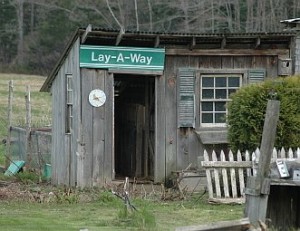Raising chickens is a decision I don’t think you will ever regret. I can’t lie to you. They are work but very enjoyable work. You will become more self-sufficient; have fresh organic eggs, a natural disposal for your kitchen scraps and an endless supply of fertilizer!
The Chicken Coop
 Let’s talk about building a chicken coop. The first thing to consider is how many chickens you want. How many eggs will you need for your family, how many will you want to give away to family members and neighbors and how many you would like to sell. As you know, people pay a premium price for organic, range free eggs.
Let’s talk about building a chicken coop. The first thing to consider is how many chickens you want. How many eggs will you need for your family, how many will you want to give away to family members and neighbors and how many you would like to sell. As you know, people pay a premium price for organic, range free eggs.
The inside of the hen house needs to be planned out carefully taking into consideration the cold and wind in the winter and heat of the summer.
You will need a roost for the chickens. A roost is ladder like and has narrow boards (approx. 3” wide) running length wise of the side boards. The side boards should be thicker and wider, such as a 2X4. The roosts are secured to the wall at an angle about ¾ up the wall.
The nesting boxes should be about 13” square and placed approximately 24” off the floor. Your chickens won’t have a problem jumping that high. I like a 1”X4” board nailed to the bottom front of the boxes. This helps keep the straw in and the eggs from being knocked out of them.
If you put them higher than the recommended 24” it could entice them to roost in the boxes. There is nothing worse than gathering eggs and find some are covered in “fertilizer”. (Ask me how I know that!!)
My personal preference is nesting boxes with a door on the outside to gather the eggs. Keep an ample amount of straw or wood shavings in the nesting boxes – changing it when it becomes soiled or the chickens scratch it out. A good ratio of chickens to nesting boxes is three chickens per box.
A solid floor in the coop will make it so much easier to clean. You’ll find chickens have terrible toilet habits. Spreading straw on the floor, and a little extra under the roost, makes for easier cleaning. When it becomes soiled rake it out (versus using a shovel if there is no straw) and use it in your compost pile.
I’ve read some people use it as mulch but care should be taken, fresh chicken manure can burn your plants. When the smell of ammonia is strong in the coop, you’ll know it’s time to change the straw.
For chickens to lay well they have to be kept cool in the summer and warm in the winter. Plan your coop with a way to open the windows for air flow in the summer.
Have a sturdy door so you can shut them up at night after they go to roost. It isn’t so important to shut them up in the summer if you have chicken wire on the top as well as the sides of your pen or run.
Completely enclosing the pen is important. Not only can the chickens fly out (unless you clip their wings) but most predators will have no problem getting in the pen if it isn’t covered.
Eagles and hawks make regular visits to my chicken pen and will even set on a corner post looking through the wire at my hens. A neighbor decided to cover her pen after she realized the eagles and hawks were eating rather well at her expense!
Also, a fox or raccoon can do some serious damage to your flock as can bob cats. You may not live in an area where you have to worry about all the critters we do but chances are you have one or two to be concerned about.
Chickens love to scratch so having a feed dispenser for the lay crumbles or pellets will help eliminate any waste. I like throwing some chicken scratch (a mixture of cracked corn, wheat and milo) around the pen to satisfy their scratching and give them some added nourishment. Plus, the corn will give the egg yolks a dark yellow color instead of the pale lemon color of most eggs you get in supermarkets.
Waterers are also a good idea because it’s easier to keep the water clean. Chickens aren’t the most sanitary of creatures when it comes to food and water. Both can be purchased at most places that sell feed – by mail order or on line. In areas where the winds are harsh, placing the feeders and waterers inside the chicken coop is a good idea.
Raising your own chickens can sometimes seem like quite a bit of work but the benefits are many. The best of which will be when you taste that first egg from your very own hens. Trust me; you will never want to go back to store bought.